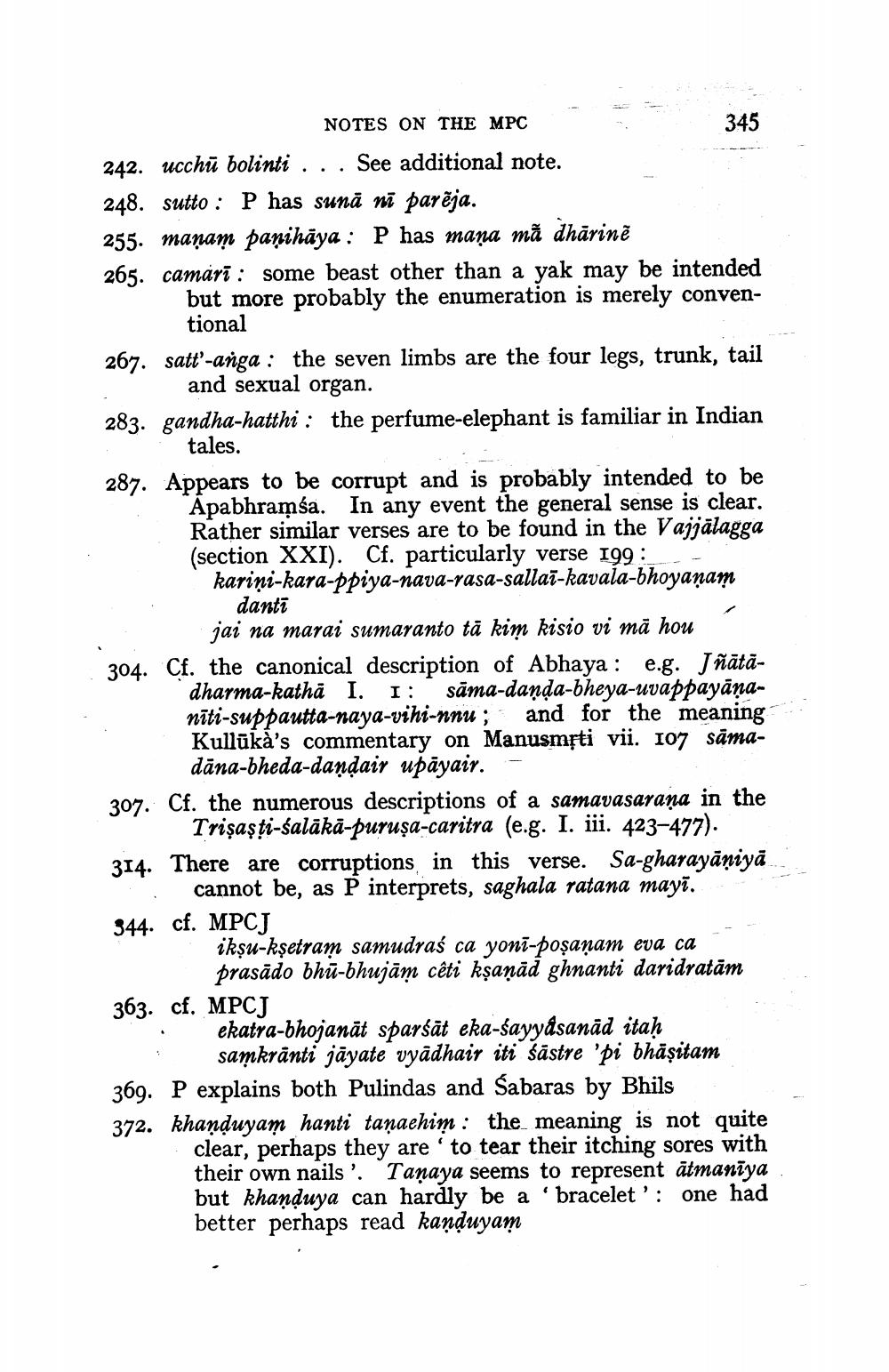________________
NOTES ON THE MPC
345 242. ucchū bolinti ... See additional note. 248. sutto : P has sunā nī parēja. 255. manam paņihāya : P has maņa mã dhārinē 265. camari: some beast other than a yak may be intended
but more probably the enumeration is merely conven
tional 267. satt-anga : the seven limbs are the four legs, trunk, tail
and sexual organ. 283. gandha-hatthi : the perfume-elephant is familiar in Indian
tales. 287. Appears to be corrupt and is probably intended to be
Apabhramsa. In any event the general sense is clear. Rather similar verses are to be found in the Vajjālagga (section XXI). Cf. particularly verse 199:kariņi-kara-ppiya-nava-rasa-sallaī-kavala-bhoyanam
danti
jai na marai sumaranto tā kim kisio vi mā hou 304. Cf. the canonical description of Abhaya : e.g. Jñātā
dharma-katha I. I: sama-danda-bheya-uvappayānanīti-suppautta-naya-vihi-nnu ; and for the meaning Kullūka's commentary on Manusmfti vii. 107 sāma
dāna-bheda-dandair upāyair. - 307. Cf. the numerous descriptions of a samavasarana in the
Trişaşti-śalākā-puruşa-caritra (e.g. I. iii. 423-477). 314. There are corruptions in this verse. Sa-gharayāniyā
cannot be, as P interprets, saghala ratana mayā. 344. cf. MPCJ
ikșu-kşetram samudraś ca yoni-poșanam eva ca
prasādo bhū-bhujām cêti kşaņād ghnanti daridratām 363. cf. MPCJ · ekatra-bhojanāt sparśāt eka-sayyåsanād itaḥ
samkrānti jāyate vyādhair iti śāstre 'pi bhāşitam 369. P explains both Pulindas and Sabaras by Bhils 372. khaņduyam hanti tanaehim : the meaning is not quite
clear, perhaps they are ' to tear their itching sores with their own nails'. Tanaya seems to represent ātmaniya but khanduya can hardly be a bracelet': one had better perhaps read kanduyam




